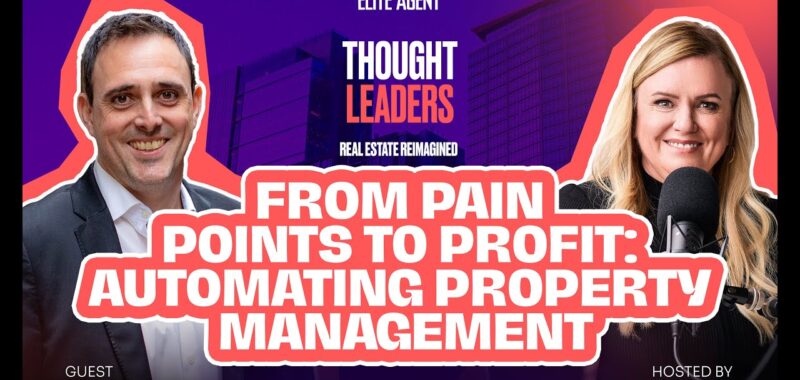Curtis Thomson is something of a systems whisperer for industries bogged down by manual processes. Having cut his teeth in the construction world and then co-founding and scaling the field service management software Simpro across the globe, he witnessed firsthand how disjointed systems and repetitive tasks can drain businesses and the people within them. He saw friends in the trades working grueling hours only to face business failure and personal hardship, sparking a passion to solve these efficiency problems with technology.
Now, Curtis brings his outsider perspective and deep experience in streamlining complex operations to the property management sector with Our Property. Property management, as he notes, is rife with accepted pain points—manual trust accounting, compliance burdens, endless maintenance cycles, and the thankless task of arrears management. Thomson sees a future where technology handles the “donkey work”, allowing property managers to escape mediocrity and focus on high-value activities like building relationships and growing portfolios.
The conversation dives into the practical application of automation and AI to solve core property management challenges. It’s not just about surface-level fixes, but fundamentally rethinking processes like trust accounting, maintenance coordination, and even arrears collection to build more resilient, efficient, and ultimately more human-centric property management businesses.
Podcast: Play in new window | Download (Duration: 20:10 — 36.9MB) | Embed
Subscribe: Apple Podcasts | Spotify | | Subscribe to Thought Leaders – Real Estate Re-Imagined
Breaking Free from “How It’s Always Been Done”—The Inertia Problem
A recurring theme is the industry’s tendency to stick with outdated processes simply because “that’s the way we’ve always done it”. Curtis argues this isn’t unique to property management but a common human trait. He shared an anecdote about a customer acknowledging their agency hadn’t changed in 20 years and was actively trying to reconfigure. Escaping this inertia requires honestly evaluating which tasks add value versus which are just “busy work”.
Curtis notes, “A lot of the time it’s just, we just keep doing it this way because it’s just the way we’ve always done it”. He stresses the importance of questioning processes: “Are you adding value to the conversation with the landlord right now? Are you adding value to the tenancy right now? Like, is it, is this good for the customer? Is this good for the business? If not, Why are you doing that?”.
Trust Accounting Reimagined—Automating Compliance and Reducing Risk
Trust accounting has always been a major compliance headache. Thomson explains how Our Property integrates the trust account differently, automating many manual reconciliation and disbursement tasks. This approach aims to eliminate human error and the associated risks, effectively outsourcing the compliance burden.
Untangling Maintenance—Coordination Through Automation
Maintenance is another area plagued by inefficiency. It involves numerous moving parts: capturing requests, coordinating trades, getting approvals, managing quotes, and handling keys. Thomson highlights the potential for automation to manage these complex workflows based on predefined rules and landlord preferences.
He points out the absurdity of manual follow-ups: “Why am I having to chase the trade to bring the keys back? Can’t the systems just do that for me?”. Technology can handle routing emergency jobs, managing quote requirements, and even suggesting trades based on performance data, freeing property managers from constant chasing.
Personalised Arrears Management—AI as the ‘Bad Cop’
Nobody enjoys chasing arrears. Curtis sees AI as perfectly suited to handle this often unpleasant task, moving beyond generic templates to personalised communication campaigns based on tenant behaviour and communication history. The system can determine each individual’s best messaging style (soft or firm) and channel (email or SMS). When a human intervention is needed, AI can apply guidance. This approach has demonstrably reduced arrears rates for agencies using the platform.
Embracing Change—Focus on the Goal, Not Just the Pain Point
Implementing change is challenging and often met with resistance. Curtis advises focusing on specific, tangible outcomes rather than just fixing isolated pain points while considering the overall picture. He emphasises the importance of involving the team and communicating the “why” behind the change to win hearts and minds.
“You need to have specific goals”. When considering change, “What is it you’re trying to actually achieve? And then go about setting, you know, for that outcome”. Ultimately, Thomson urges leaders to reconnect with their original motivations: “I would like to have people remember why they’re here in the first place… A lot of us have lost sight of why we’re here”.
Listen/Watch:
What’s your agency’s biggest “busy work” task that you wish you could automate away? Let us know in the comments!

